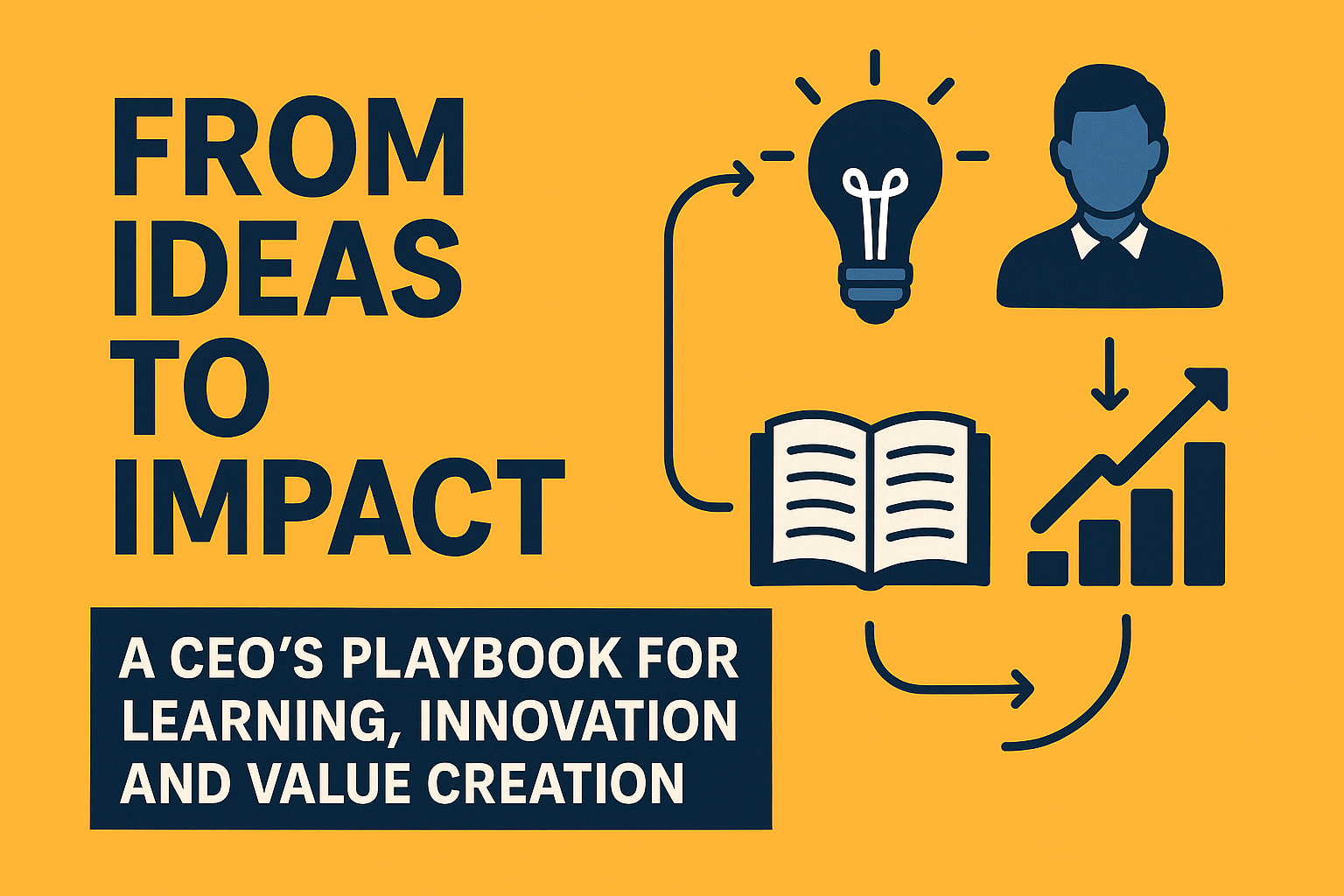From ideas to impact: a CEO’s playbook for learning, innovation and value creation
We hear the word innovation a lot. Too often it’s used as a synonym for novelty — a shiny prototype or a flashy pitch. Real innovation, for me, is narrower and far more demanding: it’s the ability to create measurable value for people, sustainably and at scale.
My career sits at the intersection of product development, design, education and digital manufacturing. Over the last decade-plus, I’ve led teams that ship products, train thousands of learners, and build systems that turn ideas into manufacturable reality. These experiences shaped a playbook I use daily — it’s practical, messy at times, and oriented toward outcomes.
Below are the principles I lean on, and how they translate into action.
1. Commit to learning — deliberately and continually
Learning is not an occasional activity; it’s an operational pillar. But not all learning is equal. Turn knowledge into applied skill quickly:
Build short, outcome-driven projects that force learners to apply new ideas.
Run mentorship circles — teaching is the fastest accelerator.
Measure learning by what learners can do (a working prototype, a deployed feature), not how many hours they logged.
At Generative CAD, we built an outcome-based academy because we believe access to relevant skills must be practical and measurable.
2. Grow with purpose — align personal, team, and company growth
Growth that isn’t tied to value creation is vanity. I map growth to three key stakeholders: users, the team, and the market. For each initiative, we ask:
Who benefits?
What measurable change will they experience?
How does this move our organisation forward?
This alignment keeps teams focused and reduces waste.
3. Design for value first — then optimise for novelty
A great product clearly and simply solves a real problem. Start by finding the smallest, highest-leverage problem you can solve for a real user. Prototype fast, test with real people, then refine.
We use generative design and digital manufacturing not for the tech for tech’s sake, but to compress iteration cycles — cheaper, faster learning through physical prototypes.
4. Innovate within constraints
Constraints are creativity’s friend. Limited budgets, tight timelines, or manufacturing realities force better design choices. Learn to lean into constraints and use them to create solutions that are affordable and scalable.
5. Build partnerships that multiply impact
No single organisation can build an ecosystem. Partnerships — with universities, corporates, NGOs, and investors — multiply reach and resources. When we partner, we look for shared outcomes, not just shared logos: who gets trained, what products can be manufactured locally, and what jobs are created?
I’m deeply interested in collaborations that turn university design studios into product development hubs — training people and incubating startups that build real products for export and local markets.
6. Keep a clear call to serve — let impact lead decisions
Service keeps strategy honest. When a project has commercial promise but limited impact, ask whether it aligns with your mission. Impact isn’t always charity — it’s building sustainable products that elevate people’s capacity and livelihoods.
7. Operationalise everything — systems beat heroics
Great ideas too often die on the altar of execution. Systems — for hiring, onboarding, project delivery, quality control, and measurement — allow small teams to scale impact reliably.
How this looks in practice
Practical examples are where philosophy becomes meaningful. In my work, we:
Built an eLearning academy with project-based outcomes so learners graduate with real portfolios.
Launched on-demand digital manufacturing capabilities so inventors can turn prototypes into small-batch products quickly.
Ran digital marketing campaigns and partnerships that turned awareness into real uptake and commercial traction.
These are not silver bullets — they’re iterations. We test, measure, and iterate again.
Final note — an invitation
If you care about turning learning into livelihoods, design into products, and partnerships into systems that last — we should talk. Whether you’re a university, a startup, a maker, or a corporate partner, there are practical ways we can build together.
I’m Chukwubuikem Felix Amaefule — I lead Generative CAD Services Limited because I believe the future of making in Africa should be built by Africans, for the world. If that resonates, reach out. Let’s move from ideas to impact.


